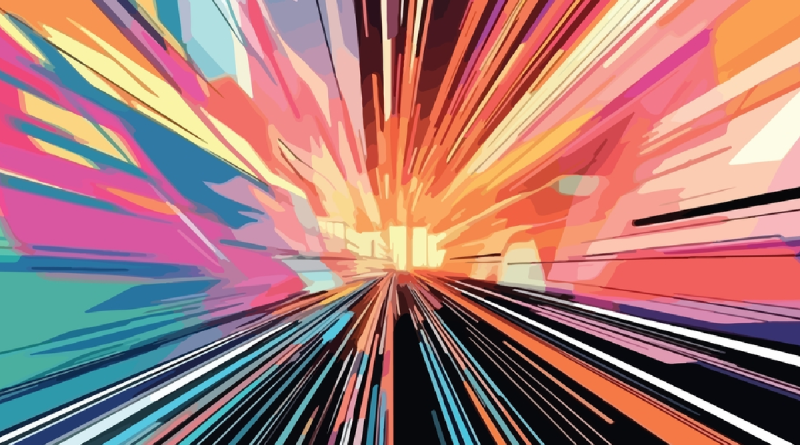Essence of Texturing in Animation: Unveiling the Why and How
Animation, a captivating blend of art and technology, comes to life through a symphony of visual elements. Among these, texturing plays a pivotal role in transforming flat, lifeless surfaces into rich, immersive environments. In this exploration, we delve into the why and how of texturing in animation, unraveling the significance of this process and the techniques employed to breathe vibrancy into the animated world.
The Why: Unveiling the Purpose of Texturing in Animation
- Visual Realism and Immersion: Texturing stands as the foundational element for attaining visual realism in animation, a crucial aspect seamlessly handled by 3D animation services. Whether capturing the intricacies of tree bark, the reflective sheen of metal, or the soft, tactile feel of fabric, textures introduce a layer of detail mirroring real-world surfaces. This dedicated commitment to authenticity not only elevates the overall visual quality but also enhances the viewer’s immersion, fostering a deeper connection with the animated narrative.
- Character Definition and Expression: In character animation, textures go beyond superficial details—they become the essence of the character. Skin textures, clothing fabrics, and even hair patterns contribute to defining a character’s personality and backstory. The subtle nuances in texture can convey emotions, age, and experiences, adding depth to the character’s visual identity.
- Environmental Storytelling: Environments in animation serve as more than mere backdrops; they are storytellers. Texturing facilitates the communication of the environment’s history, purpose, and mood. Whether it’s the weathered appearance of ancient ruins or the lush vibrancy of a fantastical forest, textures play a vital role in conveying the narrative without uttering a word.
- Enhanced Lighting and Shading: Texturing and shading go hand in hand, creating a visual dance that responds dynamically to light sources. The interplay of textures with lighting not only enhances the overall aesthetic but also contributes to the portrayal of different materials. A well-textured surface responds differently to light than a flat, uniform one, bringing animation to life with subtlety and nuance.
The How: Unraveling the Techniques of Texturing in Animation
- UV Mapping: Before diving into the world of textures, animators embark on the process of UV mapping. This involves unwrapping the 3D model’s surfaces onto a 2D plane, creating a canvas for the textures. Proper UV mapping ensures that textures are applied seamlessly, avoiding distortions or awkward seams in the final animation.
- Texture Painting: Texture painting involves the meticulous application of colors, patterns, and details onto the UV-mapped surfaces. Artists use specialized software to bring textures to life, adding layers of complexity to the animation. This step requires a keen eye for detail and a deep understanding of the desired visual outcome.
- Procedural Texturing: Procedural texturing is a powerful technique that involves using algorithms to generate textures. This method allows for the creation of intricate patterns, realistic weathering, and complex surfaces without relying solely on hand-painted details. It is particularly useful for creating repetitive or intricate textures with a high level of consistency.
- Normal and Bump Mapping: Normal and bump maps add an extra dimension to flat surfaces, creating the illusion of depth and intricacy without increasing the model’s polygon count. These maps simulate the way light interacts with surface irregularities, enhancing the perception of texture without the need for additional geometry.
- Material Shading: Shading plays a crucial role in how textures are perceived in different lighting conditions. Material shaders dictate how light interacts with surfaces, influencing aspects like reflectivity, transparency, and specularity. The choice of shaders significantly impacts the visual quality and realism of the animation.
- Texture Compression and Optimization: As animations become more complex, optimizing textures becomes essential for efficient rendering and faster loading times. Texture compression techniques ensure that the animation remains visually stunning without compromising performance. This involves balancing file sizes with quality to achieve optimal results.
The Symbiosis of Texturing and Animation:
In the dynamic world of animation, texturing and animation are interconnected realms that harmonize to create a captivating visual experience. The synergy between movement and texture elevates the overall impact of the animation, transcending it from a series of frames to a living, breathing narrative.
Challenges and Innovations in Texturing:
While texturing brings a wealth of benefits to animation, it is not without its challenges. Balancing the desire for realism with the constraints of computational resources can be a delicate dance. Innovations such as advanced texture mapping techniques, real-time rendering technologies, and AI-driven texture generation are continuously pushing the boundaries of what’s possible in texturing for animation.
Conclusion: The Tapestry of Animation Unveiled Through Texturing
In the intricate tapestry of animation, texturing emerges as the thread. That weaves together visual richness, storytelling depth, and immersive realism. The meticulous artistry and technological finesse applied to texturing transform digital canvases into worlds that captivate the senses. Understanding the why and how of texturing equips animators with the tools to breathe life into their creations. Ensuring that each frame resonates with authenticity and artistry. As animation evolves, so too does the role of texturing. Shaping the future of visual storytelling in ways yet to be imagined.

